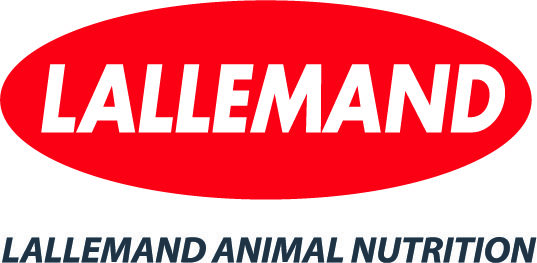Getting more milkfat has been a constant goal in our industry. Along with milk protein, fat production serves as a main driver for farm financial success and, therefore, has been a targeted topic for genetic improvement, diet formulation and dairy research.
In the past, while addressing the question “How do we improve butterfat?”, the focus was to utilize a dairy’s singular butterfat percentage to make management decisions. Today, the industry understands the make-up of milkfat thanks to mid-infrared (MIR) technology which, in turn, can provide dairy farms with a milk fatty acid analysis.
A milk fatty acid analysis teases apart the milkfat into its three groups of milk fatty acids (MFAs): de novo, preformed and mixed (see sidebar). With greater access and adoption of MIR technology in the field, and the use of milk fatty acid analyses by consultants and dairy farmers, we can fine-tune our question to “Which group of milk fatty acids is holding us back?”
Usage and type
Milk fatty acid testing has been heavily utilized on the East Coast, in part due to its development originating at Cornell University and the Miner Institute. Still, there are third-party testing labs providing milk fatty acid analysis across the country, including California, New Mexico, Minnesota and New York, allowing for greater access nationwide. In more recent years, DHIA labs, payment testing labs, as well as certain milk co-ops have acquired new MIR machines or access to fatty acid testing and are providing this analysis regularly to its producers.
In addition to availability, it is important to identify and distinguish the two machines on the market that perform milk fatty acid analysis testing, Delta and FOSS machines. While consistency and quality between these brands look good in recent months, milk fatty acid models between types, or sometimes within type, can differ. So it can be hard to compare results across machines or even parts of the country.
Our recommendation is to track your herd over time, establish baselines for that particular herd and monitor tests to adjust accordingly. And if given external benchmarks, be sure to know which MIR brand or testing facility they match.
One other difference between the machines is the ability to provide a double bond per fatty acid index. This is unique to the Delta brand, and it can provide valuable insight around the amount of unsaturation in the mammary gland, therefore helping dairies determine if they are feeding excess unsaturated fat in rations. (See Step 3 for more about this.)
What does it cost?
Some payment testing facilities or co-ops are offering this service free for their customers on every tanker load. Others, including DHIA groups, are offering this service at an additional cost. If neither of these options are available, you can utilize third-party labs to send sampling in for testing. Cost of a milk fatty acid analysis is between $2 and $5 per sample. However, the hidden cost of third-party testing lies with overnight shipping fees. Samples cannot get warm or freeze before testing and must be chilled immediately following collection. If samples freeze or warm upon arrival, the labs will typically notify you in the results, and this data should not be used.
Ways to help lower costs include maximizing the number of samples in a cooler or sampling and shipping multiple farms at the same time. Samples should not sit longer than two weeks before shipping, so extra planning and coordination may be needed, but it has been an effective way in the field to help dilute the expensive shipping costs across many samples and farms.
How do I best analyze and utilize the results?
After receiving a milk fatty acid analysis back from the lab, I follow four steps to evaluate quality and analyze my dairy clients’ results to help make recommendations.
- Step 1: Confirm that you have quality data. Cargill uses internal mathematical checks to ensure the analysis is accurate. Essentially, clarifying the fatty acids sum is equal to the total fat.
If samples fall outside acceptable ranges, sampling disruptions may have occurred such as no preservative pill, old samples, extreme shaking or warm/frozen samples, and we avoid using this data.
- Step 2: Check variation in sample results. I recommend taking samples for at least three to five days in a row, at the same time each day. This averages out some variations we may see day to day on any dairy. If you have multiple tanks on-farm, or inconsistent number and type of milkings going into the tank, increasing the number of samples taken can help level out some of this variation as well.
In addition, comparing results across multiple days can help identify issues going on in the environment (i.e., TMR mixing, sorting, running out of feed or not pushing up). Based on some benchmarking we’ve done across Pennsylvania herds, we suggest calculating the standard deviation across sampling days – consider these benchmarks:
Less than 0.05% = Good consistency, low environmental influence
0.05 to 0.1% = Moderate variation, some adjustments needed
Greater than 0.1% = Excessive variation, significant environmental influence that needs addressed
- Step 3: Evaluate unsaturation (double bonds index; Delta machine). Even though this is unique to the Delta machine analysis, I am making note of it because fixing this issue is one of the fastest ways a dairy can improve their milkfat percent. If you have an overload of unsaturated fat, the fastest way to fix it is to remove unsaturated fats from the diet. Common feedstuffs high in unsaturated fat include roasted soybeans, distillers grains, chocolate byproducts, cottonseed and hominy. While not as common, corn silages can also contribute excess levels of unsaturated fat through high linoleic (18:2) contents. Cows normally respond to this diet change within days. We’ve seen that even small improvements in the double bond index can improve de novo synthesis, particularly for herds trying to get that next tenth.
- Step 4: Focus on de novo synthesis, then preformed and mixed. Improving your de novo fatty acid synthesis has the biggest impact because it means we’re improving fermentation and rumen health. Improving de novo synthesis can also improve mixed synthesis and milk protein as well. However, that doesn’t mean the mixed or preformed fractions should be overlooked. If mixed and preform are low, this may involve removing or lowering monensin, identifying starch implications for insulin response or supplementing a type of bypass fat.
What does the future of testing and data look like?
There’s going to be more opportunities either to pay for this as an extra service or for testing labs and co-ops to have their own machines and provide this data to producers. I would imagine in the next few years every producer will have access to this data on every tanker load of milk.
If we consider the next five to 10 years, I believe large dairies will look to incorporate these machines on-farm for daily individual cow testing. Labs and researchers across the globe are creating models based on these groups to predict health biomarkers and provide another diagnostic tool to improve animal health.
We’ve also seen use of this data cross over into nutritional modeling as well. Cargill is currently working on adding milk fatty acid prediction models into its system, allowing nutritionists to better predict ration effects on milkfat and adjust feeding strategies to improve each fatty acid group.
In conclusion, milk fatty acid testing is an incredibly useful tool for dairy farms, as well as their nutritionists. This tool helps dairies understand where opportunities are and better answer the question “How do we improve butterfat?”
About MFAs
De novo
- Chemical structure: Four to 14 carbons
- Origin: Synthesized in the mammary gland by the cow, influenced by rumen fermentation
- If low: There is a disruption in rumen fermentation.
- Consider: Am I feeding too much starch? Do I have enough physical effective fiber? Is there too much unsaturated fat in the diet? Is the feeding environment or mycotoxins playing a part?
Mixed
- Chemical structure: 16 carbons
- Origin: Synthesized in the mammary gland by the cow, also comes from palmitic acid fed in diet
- If low: There is a disruption in rumen fermentation or inadequate supply in the ration.
- Consider: Is the de novo group low as well, indicating mammary synthesis of mixed fatty acids is also likely to be limited? Do I need to support this fraction through additional palmitic acid supplementation? Is additional fat cost-effective right now?
Preformed
- Chemical structure: 18-plus carbons
- Origin: Adipose tissue mobilized during freshening or long-chain fatty acids in the ration from standard ingredients or bypass fat sources
- If low: Insulin responses may be impacted, signaling the cow to retain or store fat as opposed to sending it to the mammary gland; are cows getting heavy?
- Consider: Is the monensin level too high? Are high starch levels impacting insulin responses?






